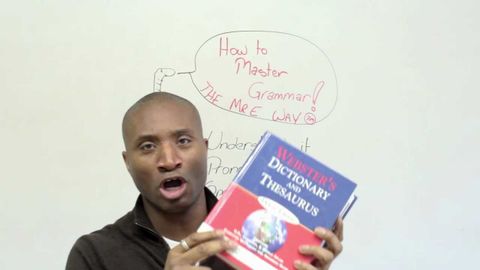
Subtitles & vocabulary
How to MASTER your vocabulary
00
Go Tutor posted on 2015/01/05Save
Video vocabulary
stress
US / strɛs/
・
UK /stres/
- Transitive Verb
- To emphasize one or more parts of a word, sentence
- To put pressure on something or someone
- Noun (Countable/Uncountable)
- Emphasis on part of a word or sentence
- Pressure on something or someone
A2TOEIC
More vocabulary
US /voˈkæbjəˌlɛri/
・
UK /və'kæbjələrɪ/
- Uncountable Noun
- Words that have to do with a particular subject
- The words that a person knows
B1TOEIC
More work
US /wɚk/
・
UK /wɜ:k/
- Noun (Countable/Uncountable)
- The product of some artistic or literary endeavor
- Everything created by an author, artist, musician
- Verb (Transitive/Intransitive)
- To bring into a specific state of success
- To be functioning properly, e.g. a car
A1TOEIC
More master
US /ˈmæstɚ/
・
UK /'mɑ:stə(r)/
- Transitive Verb
- To gain control over something
- To learn to do something very well
- Adjective
- Being very skilled at doing something
- Being the main or most important thing or part
A2
More Use Energy
Unlock All Vocabulary
Unlock pronunciation, explanations, and filters
